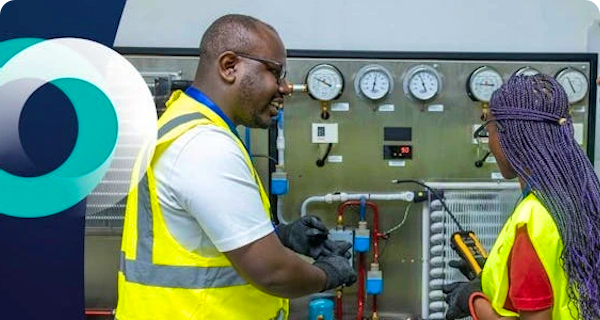Significant publications, papers and reports from the CCN academic teams, covering a wide variety of cooling and cold-chain topics.
Following in-depth research and discovery we offer you a range of reports on cooling as critical infrastructure, climate change adaptation measures and much more to help understand the cooling strategies and systems needed to maintain vital societal functions.

CCN Annual Review: June 2025
1st Jul 2025
This has been a pivotal year for the Sustainable Cooling and Cold-chain Solutions Programme. Activities have transitioned from the design and development of core facilities, tools, training, and content to ramped-up implementation through delivery of training courses, demonstration, testing, and roll-out of activities through the Clean Cooling Network (CCN), serving as the umbrella brand.

Simulation-Based Optimization for Large-Scale Perishable Agri-Food Cold Chain
24th Jan 2025
The global food supply chain faces significant challenges in maintaining quality and safety of perishable agri-food products. This study introduces a novel approach to demonstrate the efficiency of using the perishable agri-food cold supply chain.

Strengthening the climate resilience of health systems in Africa
1st Nov 2024
There is a pressing need to implement climate change adaptation measures within African health systems and to safeguard health system resilience.

ACES Annual Review: March 2024
25th Jul 2024
In less than four years, we have progressed rapidly from conceptualisation to the realisation of a physical campus in Kigali, the Africa Centre of Excellence for Sustainable Cooling and Cold-chain (ACES).

Cooling is critical infrastructure for tackling climate change impact
18th Jul 2024
Governments and policy makers must recognise cooling as critical national infrastructure (CNI) if humanity is to build resilience to the impact of climate change, according to a new report.

The Hot Reality: Living in a +50°C World
16th Jul 2024
The Hot Reality: Living in a +50°C World (published 18th July) calls for a radical shift in policy to create more ambitious strategies for delivering cooling and effectively managing energy use and achieving reductions in cooling demand.

Measles Vaccine Coverage and Disease Outbreaks
8th May 2024
We aimed to evaluate changes to measles-containing vaccine (MCV) provision and subsequent measles disease cases in low- and lower-middle income countries (LICs, LMICs) in relation to the COVID-19 pandemic.

Cold Chain Report 23: Energy Tech Will Have Greatest Influence On UK Cold Chain’s Next 10 Years
25th Mar 2024
Cold chain professionals say energy management technologies will have more influence over temperature-controlled logistics in the coming decade than automation, blockchain or changes to demand for cold chain products.

Cooling is Critical Infrastructure
25th Mar 2024
The European Commission defines ‘Critical Infrastructure’ as an asset or system which is essential for the maintenance of vital societal functions.

Living in a +50°C world: Cooling must be considered critical infrastructure, says new report.
25th Mar 2024
Experts from the University of Birmingham are calling for global cooling and cold chain to be considered as critical infrastructure as the planet continues to heat.

Raising frozen food temperature by 3°C can make global food chain more sustainable, say experts
5th Feb 2024
New research from an international team of scientists has shown that raising the temperature of frozen food by just 3°C could safely reduce food loss and cut carbon emissions by 17.7 million metric tonnes.


